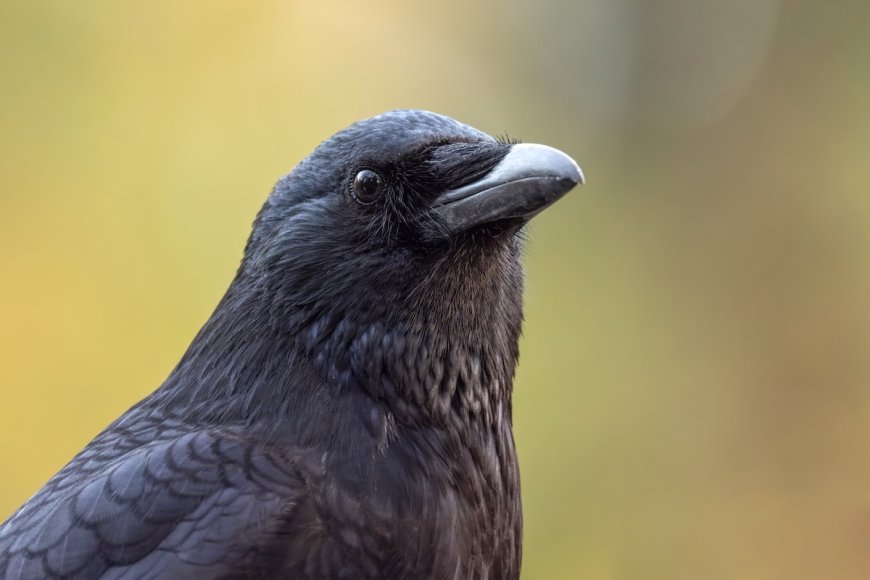Crows Only Known Animals Other Than Humans That Can Differentiate Between Geometric Shapes
Crows are widely known to be one of the most intelligent animals on the planet, along with elephants, chimpanzees, orangutans and dolphins. A new study has revealed that at least one crow species can recognize regularity in geometric shapes — the ability to pick out a shape that differs from others — a skill previously […] The post Crows Only Known Animals Other Than Humans That Can Differentiate Between Geometric Shapes appeared first on EcoWatch.

Crows are widely known to be one of the most intelligent animals on the planet, along with elephants, chimpanzees, orangutans and dolphins.
A new study has revealed that at least one crow species can recognize regularity in geometric shapes — the ability to pick out a shape that differs from others — a skill previously only observed in humans.
Three animal physiologists from Germany’s University of Tübingen tested two male carrion crows, aged 10 and 11, using several experiments involving geometric shapes.
“[W]e examined geometric primitives in carrion crows, corvid songbirds known for their advanced cognitive, and arithmetic capabilities. We tested how crows perceive visual shapes — particularly quadrilaterals such as squares, rectangles, and parallelograms — using a methodology previously used to explore geometric intuitions in humans and monkeys,” the authors of the findings wrote.
The research team used computer screens to test the crows, who were asked to select the shape in a group of six that was different from the rest. If they picked the correct “outlier,” they were given a food reward.
In similar tests, chimpanzees and bonobos did not appear to be able to recognize geometric regularity, reported Phys.org.
“While animals from diverse taxa are known to use spatial relationships between landmarks and the surfaces of areas to navigate and to orient in space, Euclidean geometry provides a mathematical framework for understanding shapes, objects, and spaces, and is rooted in geometric rules. Animals’ sensitivity to geometric regularity has been found to be notably limited; nonhuman primates do not recognize geometric regularity in tests involving the perception of visual shapes, whereas humans do,” the authors wrote. “This result led to the interpretation that the recognition of geometric regularity could constitute a uniquely human ability.”
However, the crows in the study caught on immediately. For example, all of them were able to pick out a star placed in a group of rectangles, Phys.org reported.
To up the ante and determine the crows’ skill level, the team presented objects that differed only slightly from the others, such as a box tilted slightly in comparison with the rest. The accuracy of the crows’ choices decreased in response, but remained much higher than chance.
“Our results, showing that crows spontaneously recognize geometric regularity in visual shapes, contrast with those from a study involving monkeys that failed to discriminate quadrilateral stimuli based on geometric regularity. With systematic improvement in detecting more regular quadrilaterals, crows exhibited a pattern of sensitivity to geometric properties such as parallel sides, symmetries, and angles that resembled that observed in human subjects, albeit with lower overall performance than humans,” the authors said.
The results indicated that the crows were able to not only recognize geometric regularity, but to do so without any previous learning.
“Spatial regularities are relevant for birds and other animals. Several studies indicate that birds use them for orientation and navigation in larger arenas. Pigeons have been shown to be sensitive to shape regularities of visual word forms. Some animal species are sensitive to symmetry in abstract patterns or ecologically relevant sexual signals,” the authors wrote. “However, while symmetry is just one aspect of defining the regularity of a two-dimensional shape, the angles and relative lengths of its sides are crucial features. Crows have been shown to discriminate the relationships of line lengths during categorical discrimination, potentially aiding their grasp of the varying side lengths in different quadrilateral shapes.”
The study, “Crows recognize geometric regularity,” was published in the journal Science Advances.
The post Crows Only Known Animals Other Than Humans That Can Differentiate Between Geometric Shapes appeared first on EcoWatch.



















































